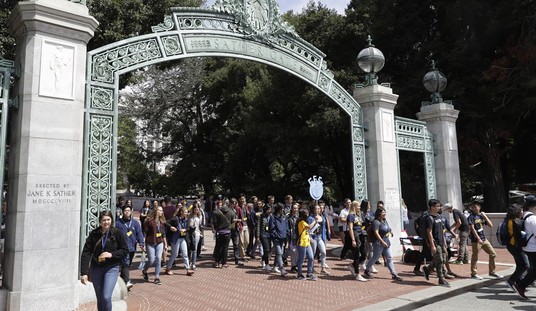Earlier today, I wrote about the new ad from Bill Clinton that correctly identified employment as the biggest issue in the campaign … a welcome change from the distraction strategy of the Obama campaign this summer. The former President argued that “This election, to me, is about which candidate is more likely to return us to full employment,” and claimed Barack Obama’s policies were the most likely to lead us in this direction. We have to assume that Clinton refers to Obama’s present first-term economic policies, since the campaign isn’t offering a second-term economic agenda and mostly refuses to talk about the economy at all.
If that’s the case, though, the data from Obama’s policies in the first term decisively defeats Clinton’s argument. The BLS has two good measures on overall employment/unemployment in the American workforce: the civilian participation rate and the U-6 under/unemployment aggregate percentage of the workforce. The U-6 measure goes back to 1994, the second year of the Clinton term, so we’ll look at both measures from that point forward, using the graphs produced by the BLS.
First, the BLS describes U-6 as the “total unemployed, plus all persons marginally attached to the labor force, plus total employed part time for economic reasons, as a percent of the civilian labor force plus all persons marginally attached to the labor force.” That’s a fairly comprehensive measure of joblessness, and more stable than the topline unemployment rate after the participation rate dropped dramatically over the last four years; that reduces the denominator in the unemployment-rate equation, making the number artificially low in comparison to earlier rates. Since 1994, here is the U-6 measure graphed through July 2012:
The big increase came with the Great Recession before Obama took office. However, in the last four years, the number has only declined moderately, and in fact it’s gone back up the last few months. There is no great progression toward “full employment” in the data for the Obama recovery, nor even a decline to the same levels experienced in the 2001-3 recession. We’re not even coming close.
Now look at the civilian population participate rate for the workforce. This measures the percentage of people actively working or seeking work, and the graph again starts in 1994 and progresses through July 2012:
 This makes it clear that Clinton’s argument doesn’t hold up to scrutiny. The decline in the participation rate didn’t fully get underway until Obama took office, when it was at 65.7%. When the recovery began five months later, it was still 65.7%. It’s now 63.7%, near a 30-year low of 63.6% that we hit in April of this year.
This makes it clear that Clinton’s argument doesn’t hold up to scrutiny. The decline in the participation rate didn’t fully get underway until Obama took office, when it was at 65.7%. When the recovery began five months later, it was still 65.7%. It’s now 63.7%, near a 30-year low of 63.6% that we hit in April of this year.
Unless Obama has a plan to completely revamp his economic policies (and regulatory policies as well), Clinton’s argument best applies to Mitt Romney, not Barack Obama. At the very least, Romney would bring in new approaches that might reverse the employment declines that are well documented in the official government data.
Update: In the paragraph after the first graph, I mistakenly wrote “full unemployment” when I meant “full employment.” I’ve corrected it; thanks to Dogsoldier for the correction.








Join the conversation as a VIP Member